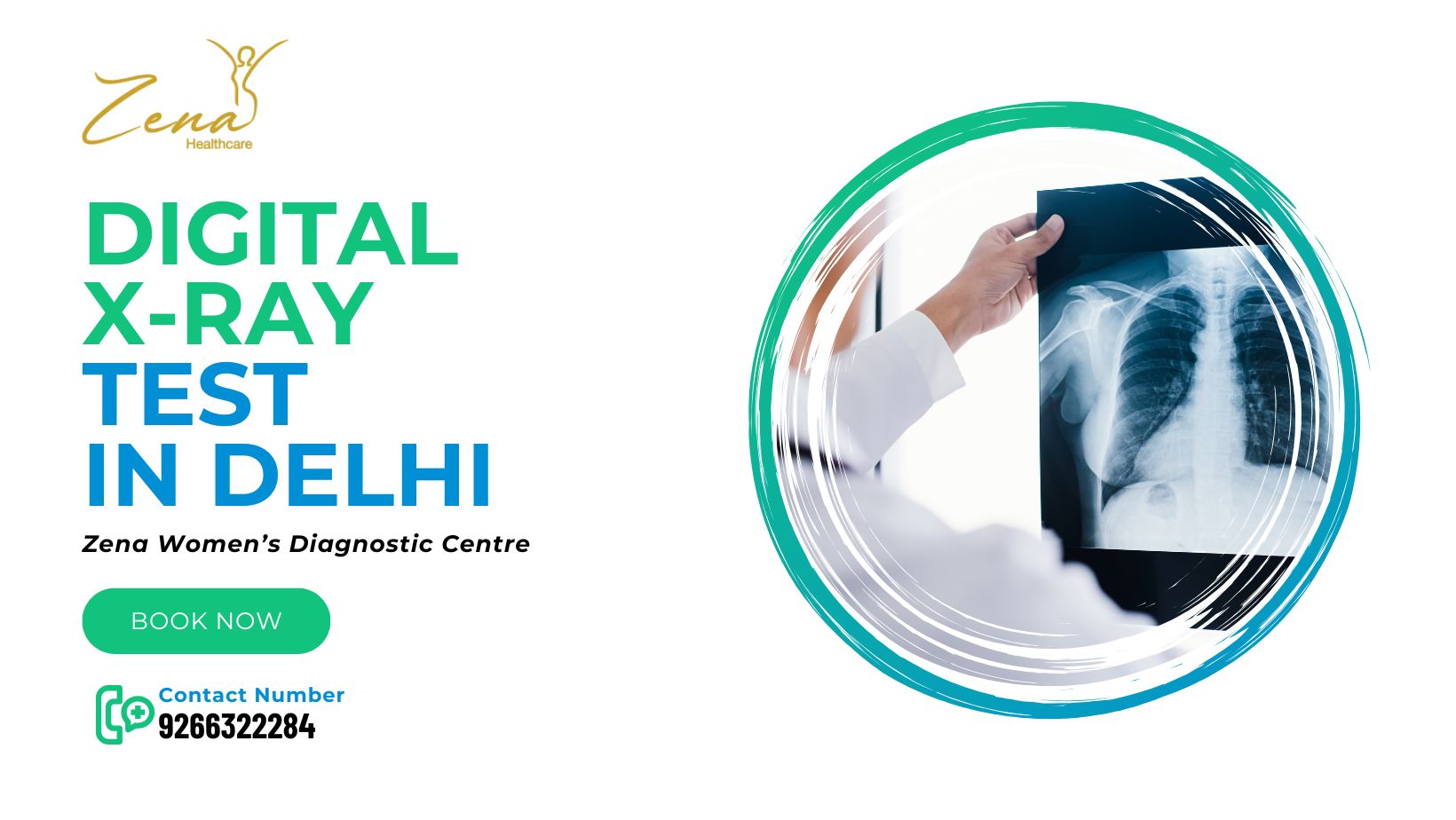In recent years, the medical world has been witnessing commendable transformation in the context of digital technologies. One of the most impactful advancements is digital X-rays. This diagnostic procedure is not just safe but also efficient, impactful and fast, allowing quicker and accurate diagnoses. However, there might be a lot of pluses; an affordable digital X-ray test price in Delhi could be something to think over. Thus, in this blog we will understand how digital X-ray is changing healthcare, reshaping modern medicine, along with where to get it at affordable pricing. Stay tuned for further information.
Understanding Digital X-Ray
A digital X-ray is also known as digital radiography. It is an advanced form of X-ray imaging where digital sensors are used as compared to photographic film. Thus, the procedure involves exposing your body to only a controlled amount of radiation, which passes through your body. The radiation is then captured electronically to create detailed images of bones, organs and tissues.
In addition to that, unlike traditional X-rays developed in a dark room, these X-rays are processed instantly.
How Does Digital X-Ray Technology Work?
Here’s how digital X-ray technology works in detail.
The digital X-ray system uses electronic sensors and detectors to convert X-rays into electrical signals. These signals are then processed by specialised software to create high-resolution images. Now, digital X-ray systems can be further divided into two types, namely:
- Computed Radiography (CR): This digital X-ray uses a cassette-based system with a digital plate that requires scanning to produce images.
- Direct Digital Radiography (DR): This digital X-ray uses a flat-panel detector for real-time imaging with immediate results.
Key Advantages of Digital X-Ray Over Traditional X-Ray
Here are some of the key advantages of digital X-rays over traditional X-rays:
- Faster Results and Workflow: Digital X-rays produce images almost instantly, enabling:
- Quicker diagnoses
- Reduced wait times for patients
- Faster decision-making in emergencies
- Higher Image Quality: Digital X-ray systems offer:
- Sharper, more detailed images
- Ability to enhance or zoom in on areas
- Improved detection of fractures, infections, and tumors
- Lower Radiation Exposure: Digital systems often require less radiation than conventional film X-rays, making them safer especially for:
- Children
- Pregnant women (with precautions)
- Patients needing frequent scans
- Easy Image Storage and Sharing
- Images can be stored digitally in Electronic Medical Records (EMRs)
- Easily shared with specialists or across departments
- No physical film means no risk of damage or loss
- Environmentally Friendly: Digital imaging eliminates the need for chemical film development, reducing:
- Toxic waste
- Storage space
- Paperwork
Applications of Digital X-Ray in Modern Healthcare
Here are some of the common application of digital X-ray in modern healthcare:
- Orthopedics
- Detecting fractures, joint dislocations, arthritis
- Post-surgical assessments
- Dentistry
- Imaging teeth and jaw structure
- Diagnosing cavities, abscesses, and impacted teeth
- Cardiology and Chest Imaging
- Assessing heart size
- Diagnosing pneumonia, tuberculosis, or lung diseases
- Gastroenterology
- Detecting gastrointestinal blockages or perforations
- Emergency Medicine
- Fast, real-time imaging in trauma situations
How Digital X-Ray is Transforming Global Healthcare
Here’s how digital X-ray is transforming global healthcare:
- Telemedicine Integration
Digital X-rays support remote diagnostics and second opinions through cloud-based platforms, making expert care accessible even in rural or underserved areas.
- AI and Machine Learning: Artificial intelligence tools now assist radiologists by:
- Analyzing digital images
- Flagging abnormalities
- Reducing diagnostic errors
- Improves speed, accuracy, and patient outcomes.
- Cost Efficiency: While initial investment in digital systems is higher, long-term benefits include:
- Reduced film and storage costs
- Faster turnover rates
- Less need for repeat scans due to better image quality
Benefits of Digital X-Ray
Here are some of the key benefits of digital X-rays mentioned below:
- Shorter Appointment Time: Scans are faster, with minimal wait for results.
- Less Radiation Exposure: Safer for long-term monitoring.
- Comfort and Convenience: No need to revisit for lost or unclear films.
- Improved Communication: Digital images can be reviewed with patients on-screen, making it easier to explain conditions.
For affordable digital X-rays, visit Zena Female Diagnostic Centre in Greater Kailash!
Digital X-ray technology is setting a benchmark in the world of diagnostic medicine. By offering faster results, clearer images, reduced radiation, and better storage solutions, it enhances both the efficiency of healthcare providers and the safety of patients. As hospitals and diagnostic centers continue to adopt digital radiography, the benefits extend far beyond imaging, shaping a more connected, informed, and proactive healthcare system. For more information, book an appointment at Zena Female Diagnostic Centre in Greater Kailash and get an affordable and accurate digital X-ray!
